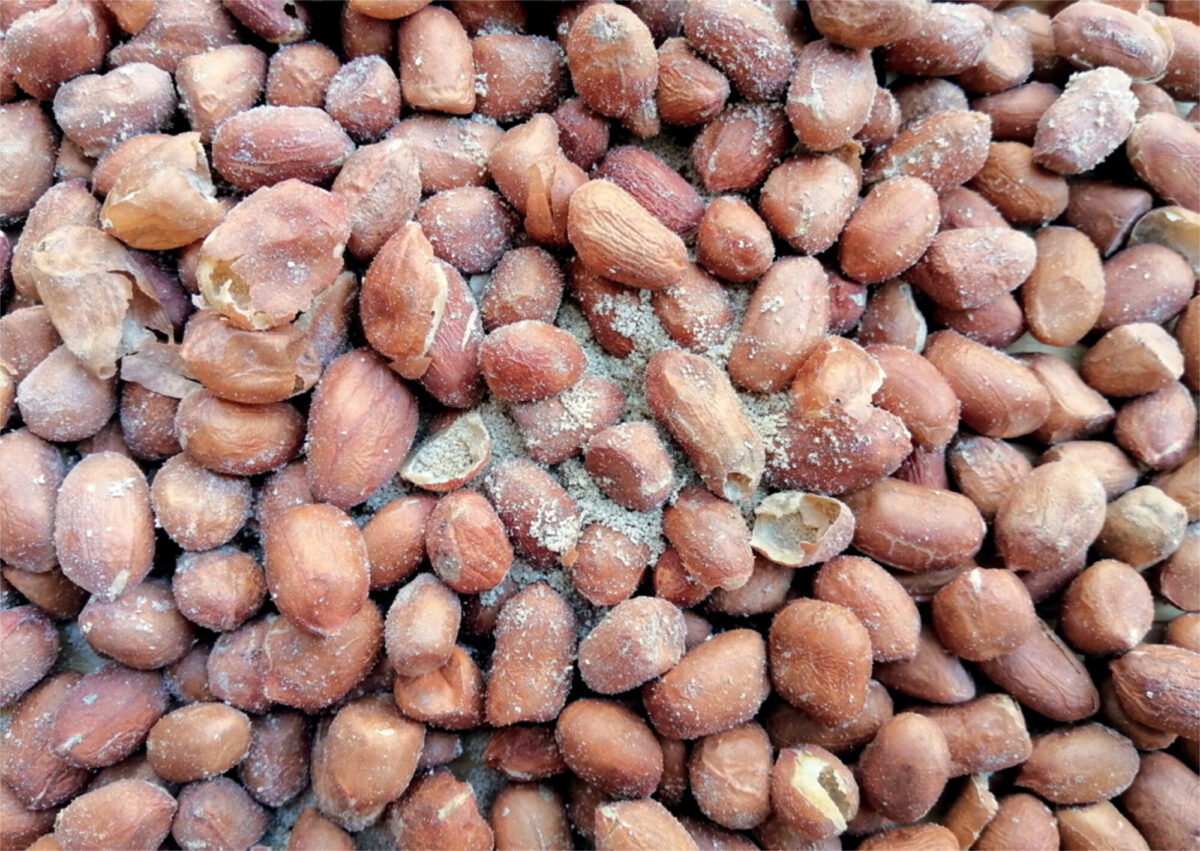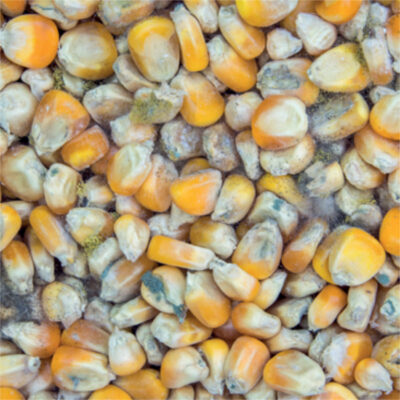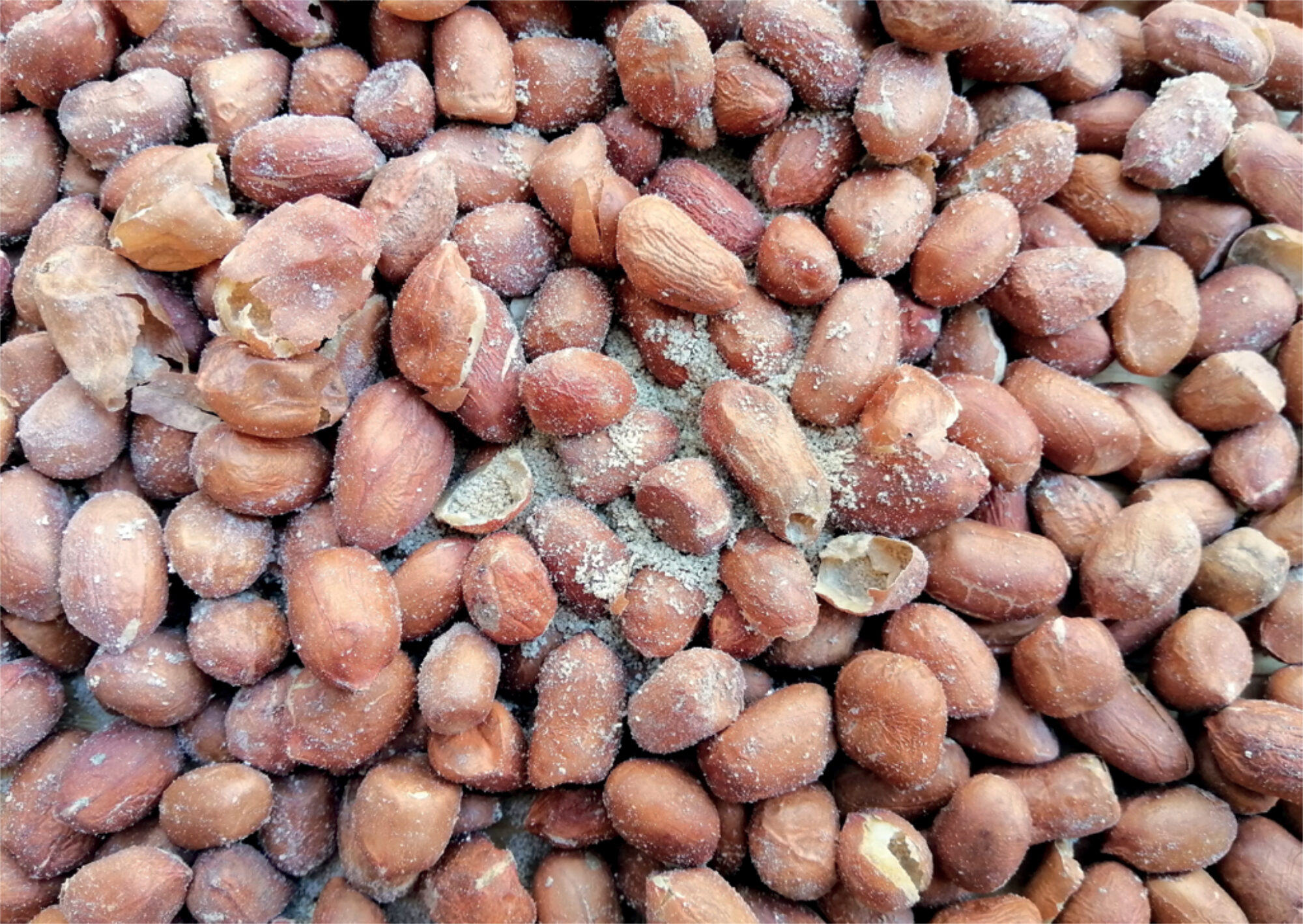Main content
Liver cancer, also known as hepatocellular carcinoma (HCC) is one of the leading causes of cancer related deaths. It accounts for up to 8.2% of all reported cancer deaths and is among the top four common causes of cancer mortality worldwide.[1] Underlying conditions such as chronic hepatitis B (HBV) or C (HCV) infection are, at present, still the most common risk factors for HCC, although their attribution will most likely decline in the coming years. Unfortunately, the prevalence of other risk factors like alcohol abuse, diabetes mellitus, and non-alcoholic fatty liver disease (NAFLD) is increasing. Moreover, much research has highlighted the – not to be underestimated – role of aflatoxins in inducing HCC.[2]
Aflatoxins are highly toxic and carcinogenic compounds produced by certain strains of Aspergillus fungi, including A. flavus and A. parasiticus. These fungi are commonly found in warm and humid regions and are able to contaminate a variety of food products, including grains, maize, nuts, and spices (Figure 1).

Aflatoxins are classified as mycotoxins, which are toxic compounds produced by fungi that can have negative impacts on human and animal health. These impacts can be either acute illness directly after consumption of contaminated food products, or long-term effects like immune deficiency and induction of cancers.[3,4] Around 4.5 billion people worldwide are exposed to dietary aflatoxins. The majority lives in (sub)tropical regions, where maize and nuts are dietary staples and storage conditions are suboptimal.[5] Due to globalized trade, dietary aflatoxins are a worldwide concern.
Contamination of crops
Worldwide, around 25% of all crops are contaminated with mycotoxin.[6] Crops get contaminated either during the growth and development phase, or during the transport and storage while exposed to warm and humid conditions, or severe drought. Some of the products at risk of contamination are maize, peanuts, rice, cassava, chili pepper, sunflower seed, sesame, and many more. Animals fed on contaminated food products can also pass aflatoxin into eggs, milk products and meat.[6]
Aflatoxin and liver cancer
Aspergillus species produce four principal aflatoxins; B1, B2, G1 and G2, of which aflatoxin B1 (AFB1) is the most potent one. Aflatoxins are highly toxic to the liver and there is strong evidence linking aflatoxins to the development of liver cancer. Acute exposure to high levels (acute aflatoxicosis) can cause acute hepatic necrosis, which can eventually lead to cirrhosis and HCC. Symptoms of acute liver failure are – among others – fever, jaundice, vomiting, abdominal pain, bleeding, and mental changes.[6] Additionally, chronic exposure to aflatoxin increases the risk of developing liver cancer. This is because aflatoxin can cause DNA damage and mutations in the P53 tumour suppressor gene, which is an essential gene in preventing cell cycle progression in case of mutated DNA.[6] As AFB1 biomarkers were developed – which made it possible to demonstrate a relationship between AFB1 and HCC – the International Agency for Research on Cancer (IARC) decided to classify AFB1 as a group 1 human carcinogen.[2,7]
Research showed that 4.6% to 28.2% of all global cases of HCC can be caused by aflatoxin.[6] Concomitant exposure to aflatoxin and HBV is quite common in low- and middle-income countries and greatly increases the risk of developing HCC. A meta-analysis by Liu et al. (2012) showed that AFB1 causes a 6-fold increase in HCC risk, HBV alone a 11-fold increase, and the two combined a 54-fold increase.[5]
Sadly, despite comprehensive research over the past decades, the five-year life expectancy of a person with liver cancer is less than 20%. Upon initial diagnosis of liver cancer, up to 95% of the liver has already been functionally destroyed. Even after liver transplantation, the survival rates of HCC patients with advanced disease are poor.[8] Moreover, a recently published study by scientist from the IARC predicts that the annual number of new cases and deaths will increase by more than 55% by 2040.[9] This is why strategies to reduce risk factors for HCC, like aflatoxin, are so important to decrease the incidence of HCC.
Prevention and control
To reduce the risk of aflatoxin exposure and the development of liver cancer, it is important to implement measures to prevent the growth of mould on food and to properly store and handle food to minimize the risk of contamination. This includes storing food in dry, cool conditions, avoiding the use of damaged or rotting food, and cooking food thoroughly. In addition, individuals can reduce their risk by eating a varied and balanced diet and avoiding high-risk foods, such as mouldy grains or nuts. The World Health Organization (WHO) recommends that governments and the food industry take steps to reduce the risk of aflatoxin contamination through measures such as improving food storage and handling practices, implementing food safety regulations, and providing education and training to food producers and handlers.[4]
In 2015, the IARC convened a working group to review health effects of aflatoxins and to evaluate intervention measures with the aim of reducing exposure. A few of these interventions were suitable for implementation. One of these interventions was increasing dietary diversity, which could have a dose effect reduction of hepatocellular carcinoma.[10] This is quite challenging, as there are still many countries who are dealing with food-, arable land- and water-insecurities. Other strategies include post-harvest measures like improved storage and sorting of the crop.
Over the years, several aflatoxin-specific biomarkers have been developed and validated. With these biomarkers, it is possible to define human exposure and risk, and they have been used in preventive intervention trials. In China, this has led to a reduction of aflatoxin exposure and a 50% reduction of liver cancer incidence as a result.[11]
Conclusion
In conclusion, aflatoxins are toxic compounds produced by certain species of Aspergillus that have been linked to the development of liver cancer and other health problems. To reduce the risk of aflatoxin exposure and the development of liver cancer, it is important to implement measures to prevent the growth of mould on food and to eat a varied and balanced diet.

References
- Bray F, Ferlay J, Soerjomataram I, et al. Global cancer statistics 2018: GLOBOCAN estimates of incidence and mortality worldwide for 36 cancers in 185 countries. CA Cancer J Clin. 2018;68:394–424.
- McGlynn KA, Petrick JL, El-Serag, HB. Epidemiology of Hepatocellular Carcinoma. Hepatology. 2021 January; 73(Suppl 1): 4–13. doi:10.1002/hep.31288.
- Bennett JW, Klich M. Mycotoxins. Clinical Microbiology Reviews. 2003;16, 497-516.
- Mycotoxins [Internet]. World Health Organization; 2018. Available from: https://www.who.int/news-room/fact-sheets/detail/mycotoxins
- Liu Y, Chang CH, Marsh, GM, et al. Population Attributable Risk of Aflatoxin-Related Liver Cancer: Systematic Review and Meta-analysis. Eur J Cancer. 2012 September; 48(14):2125-2136.
- Dhakal A, Hashmi MF, Sbar, E. Aflatoxin Toxicity. Treasure Island (FL): StatPearls Publishing; 2022.
- IARC. Some traditional herbal medicines, some mycotoxins, naphthalene and styrene. IARC Monographs on the Evaluation of Carcinogenic Risks to Humans. 2002; 82:171–300.
- Groopman JKD, Smith JW, Rivera-Andrade A, et al. Aflatoxin and the Etiology of Liver Cancer and Its Implications for Guatemala. World Mycotoxin J. 2021;14(3):305-317.
- Rumgay H, Arnold M, Ferlay J et al. Global burden of primary liver cancer in 2020 and predictions to 2040. J Hepatol, Published online 6 October 2022.
- Wild CP, Miller JD, Groopman JD. Mycotoxin control in low- and middle-income countries. IARC Working Group Reports, No. 9. Lyon (FR): International Agency for Research on Cancer; 2015.
- Chen JG, Egner PA, Ng D, et al. Reduced Aflatoxin Exposure Presages Decline in Liver Cancer Mortality in an Endemic Region of China. Cancer Prevention Research. 2013; 6: 1038–1045.



















































